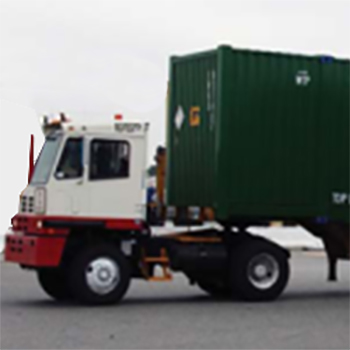Why Shippers Need Domestic Intermodal in Their Logistics Strategy

More and more shippers are transitioning pieces of their 53' needs to intermodal to balance their capacity requirements because truckload alone cannot meet their requirements.
Shippers have a lot on their plate today, so why tinker with a logistics strategy is a mindset a logistics professional may choose.
What we want to share is why this is not a good path to follow.
The two biggest reasons logistics professionals should work intermodal into their logistics strategy is Capacity and Price.
Below are a few reasons why it is important for truckload shippers to not sit on the sidelines and begin to implement an intermodal strategy, as it relates to Capacity and Price:
Price is and will continue to rise.
The thought that the truckload pricing equation is heavily weighted toward diesel fuel prices. Some are under the belief decreasing diesel fuel will bring down the price of truckload rates. The fact is truckload rates are impacted some, but not in a meaningful manner where it significatly changes the truckload tointermodal economic value proposition.
I recently read an article that indicated shippers $70 per barrel oil is the tipping point on theintermodal and truckload decision.
The reasons behind the drop in oil prices are not same this time around. The oil industry operated under a cartel that would and could easily influence oil pricing, which under the new world order of oil is no longer the case, as US shale output has impacted the total global supply. OPEC held rates at a false level through the cartel manipulating output. In addition to the cartel holding prices higher, the dollar’s (currency used in the global oil transactions) strength improving against other currencies is another driver in decreasing crude.
Truckload rate indexes from DAT or CASS provide evidence price is not decreasing in the same proportion as diesel fuel.
Knowing truckload price is not dropping with diesel gets us back to capacity where the laws of supply and demand are driving price today.
While we are on the topic of price, let us cover spot pricing quickly. The Spot Market is not where shippers want to place their bets, particularly in today’s market. There are shippers believing the best rates can be found in the spot market. The reality is the majority of times the worst rates are found in the spot market. From time-to-time a shipper may find a carrier looking to re-balance a lane, but that is few and far between in today’s environment. As consumers ourselves, we know we do not get the best price when we need an item, but when we take the time to shop for the best price and then add a coupon for another 25% off to get the best price. This holds true for the spot rate market also. Shippers are at the mercy of the market at the time of quoting a spot rate.
Capacity is and will continue to remain tight.
Shippers need to be prepared for the reality that capacity is not going to loosen up anytime soon, so options need to remain open for truckload and intermodal conversion.
Economic data continues to point to increasing 53’ demand. There are global economic issues, but thankfully the US continues to post slow and steady growth.
The Industrial Production Index, which is the better index to measure future 53’ capacity needs, continues to show strength. The trend started August 2013, when the index began to pull ahead of 2007 levels for the first time. Also, with decreasing mortgage rates there is driving an expectation that new home starts will spike this sales season, as buyers believe theu will be tapping into what will be the last opportunity to take advantage of the lowest mortgage rates in history before heading up in late 2015 and 2016.
Shippers also need to realize there is more to the capacity equation than economic activity alone. Driver shortages and increasing regulations are cutting into the available truckload capacity. These factors only worsen in the coming 12 to 18 months.
To close, intermodal is not only a price competitor to truckload, but also a capacity play. More and more shippers are transitioning pieces of their 53’ needs to intermodal to balance their capacity requirements because truckload alone cannot meet their requirements.
Better to start now in a small way and gradually build the expertise.
Related: Rail Still Dominates the Logistics Landscape

Article Topics
Integrated Distribution Services News & Resources
Creating Mutually Successful 3PL Partnerships through Systems Integration R2 Freight & Logistics Acquires IDS Transportation Services Rail Still Dominates the Logistics Landscape The Ins and Outs of Intermodal Transportation Why Shippers Need Domestic Intermodal in Their Logistics Strategy U.S. Truck Driver Shortage Elevates Importance of Real Estate in Supply Chain Cost Structures Has Truckload Capacity Improved Since “The Perfect Storm” of 2014 More Integrated Distribution ServicesLatest in Transportation
Baltimore Bridge Collapse: Impact on Freight Navigating Amazon Logistics’ Growth Shakes Up Shipping Industry in 2023 Nissan Channels Tesla With Its Latest Manufacturing Process Why are Diesel Prices Climbing Back Over $4 a Gallon? Luxury Car Brands in Limbo After Chinese Company Violates Labor Laws The Three Biggest Challenges Facing Shippers and Carriers in 2024 Supply Chain Stability Index: “Tremendous Improvement” in 2023 More Transportation













